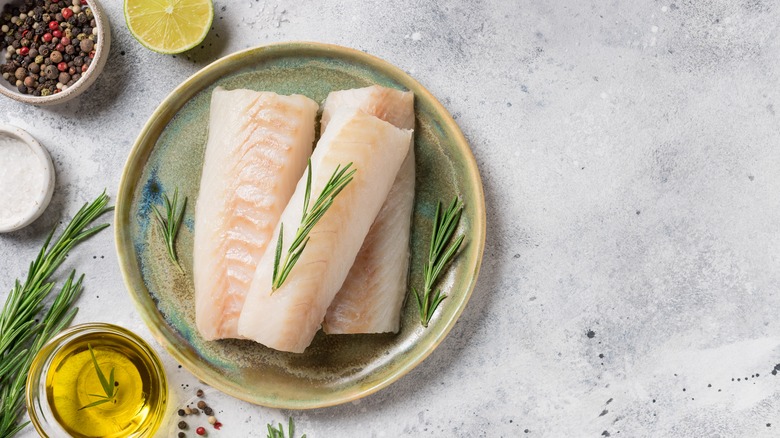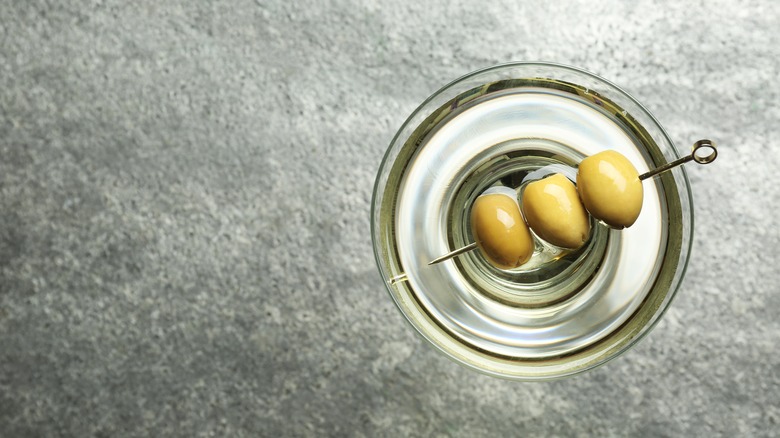The Cocktail Tool You Can Use To Check The Doneness Of Fish
Seafood is one of the quickest and simplest proteins to cook. From steaming, frying, poaching, searing, grilling, and even smoking, there are endless ways to cook it and even more ways to flavor it. Citrus and fresh herb elements pair well with the light texture and natural essence of fish, often making the final product bright, robust, and seemingly healthy. In fact, if you're a person that doesn't necessarily love fish, white fish such as cod, flounder, halibut, swordfish, lingcod, pollock, and rockfish have a much milder natural flavor, making them easier to tolerate and disguise with other ingredients.
Once you've chosen your dish and your fish, the next important step is making sure your seafood is cooked to perfection — under or overdone simply won't do. When detecting the doneness of seafood, the main rule in regards to appearance is typically the more opaque, the more cooked through. However, there is one other method that involves penetrating the fish without ruining its picture-perfect moment, and it involves a handy dandy tool straight off of your bar cart.
Cooking fish? Grab a cocktail skewer
Whether you use disposable cocktail skewers or fancy reusable sticks for adding garnishes to spiked beverages, they also make a wonderful tool for testing the doneness of your fish. It's all in the resistance. All you have to do is insert a cocktail skewer straight into the fish during its cooking process. If the skewer experiences resistance, the fish isn't ready. However, if the skewer slides through with ease, showing little to no resistance, it's ready to eat! You can use this trick on any type of fish, as long as it doesn't contain any bones. To test the difference, simply insert the cocktail skewer into the fish in increments to notice the difference in texture.
According to Epicurious, the reason raw fish yields resistance is due to the membranes that create flaky layers. When a fresh filet of salmon is exposed to heat, the membranes dissolve, making it easier to puncture through the meat. When you penetrate raw fish, you'll experience different sheets of resistance since the membranes are still present.

